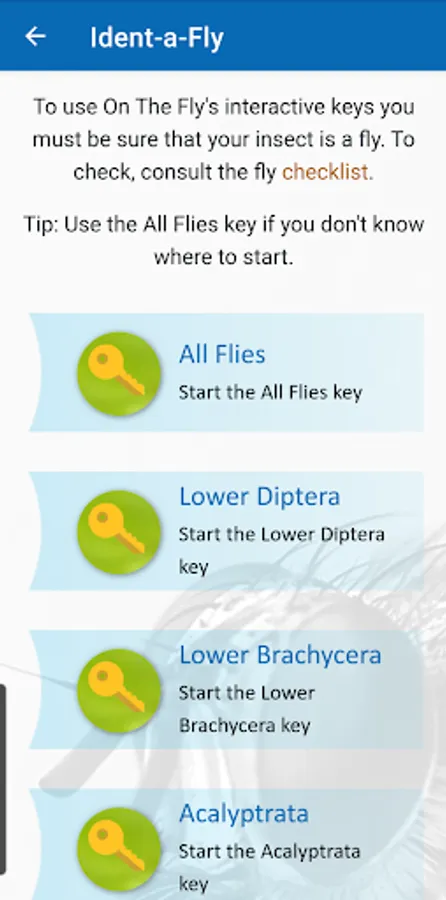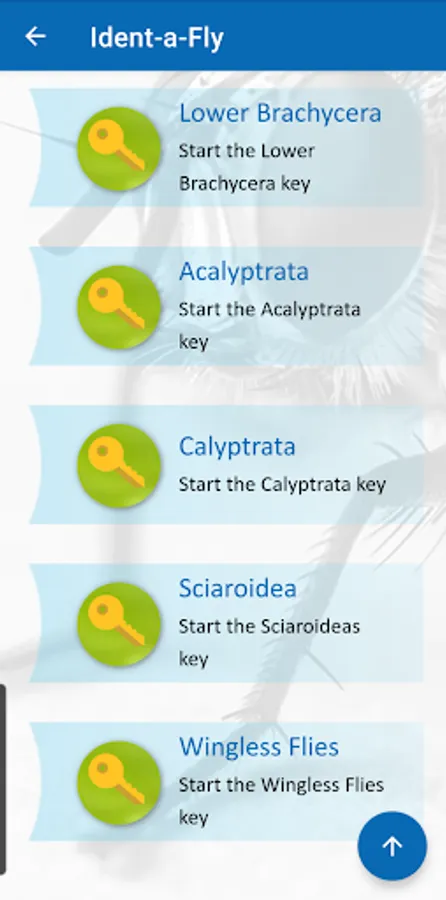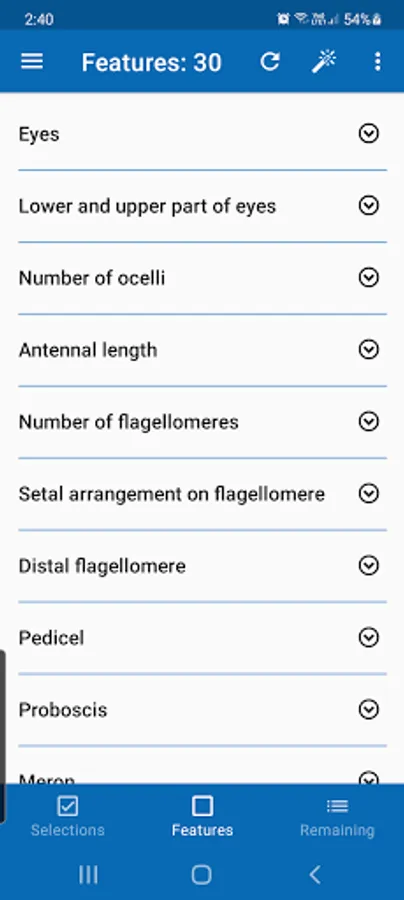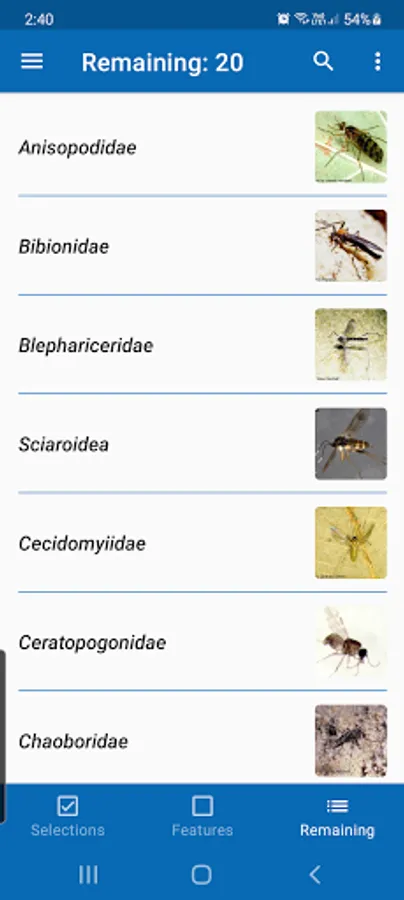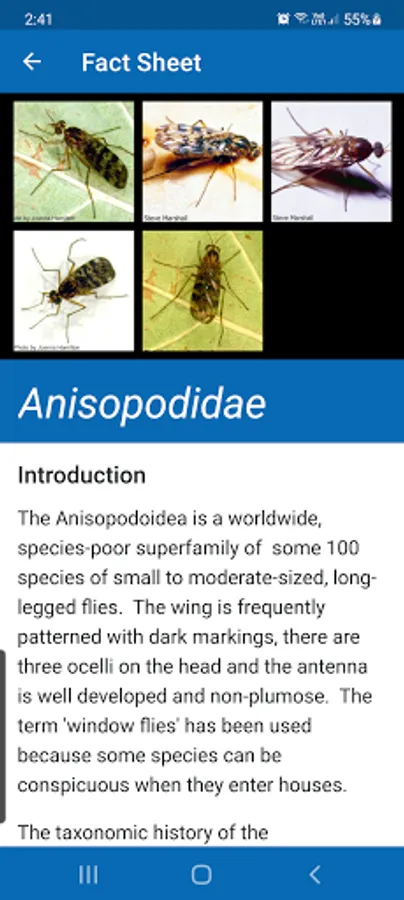On the Fly
LucidMobile
10+
downloads
$10.99
About On the Fly
With On the Fly you will be able to accurately identify the family to which an Australian fly belongs.
The App also includes further information on each Australian fly family, including photographs, a brief morphological description, biology and distribution, and links to literature and web sites.
Diptera, commonly known as 'true flies', is an insect order which includes many widespread and familiar insects such as mosquitoes, midges, sand flies, fruit flies, houseflies and blowflies. Most insects have two sets of functional flying wings, but flies have only one. The second pair are reduced to small club-like structures called halteres, which are used for balance and steering during flight.
Worldwide, there are approximately 150, 000 described fly species in 150 families (C. Thompson, pers. comm. 2004, http://www.diptera.org). However the total number, including undescribed species, is much higher. This large number of species makes Diptera one of the most species-rich insect orders and also one of the largest groups of commonly recognised organisms on earth (Brown 2003). Not only are there an enormous number of fly species in the world, they also display great diversity in anatomical, biological and ecological specialisations (Merritt et al. 2003).
The most recent estimate for the number of fly species in Australia is around 30,000 in 104 families (Yeates et al. 2004), with only 6,400 species described so far. The Australian fly fauna is largely endemic at species level, with most species occurring only in Australia (Colless and McAlpine 1991). Flies are ubiquitous and often abundant in Australian terrestrial ecosystems, where they perform important ecological functions such as nutrient recycling, predation and pollination. Many fly larvae are parasitoids of other insects. Some are economically important pests or vectors of disease, while others are beneficial, and play important biological or ecological roles such as regulating pest populations. Flies can also be nuisances, for example, the bush fly (Musca vetutissima), and various species of blood sucking mosquitoes, sandflies and blackflies (Culicidae, Ceratopogonidae: mostly Culicoides; and Simuliidae — mostly Simulium, respectively). Estimating the total number of Australian fly species is difficult given the large size of the continent, the paucity of sampling and the narrow endemism displayed by many taxa. Most families occur in Australia and those that are absent are mainly small, specialised acalyptrates, some of which may be discovered here in the future (Colless and McAlpine 1991).
This key was first published in 2005 on a CD-ROM, and subsequently deployed on the web in the “What Bug Is That?” pages. A number of changes have occurred in fly classification since the development of the content during the intervening period based on the results of phylogenetic analyses. In most cases these changes raise lineages that were once classified as subfamilies to family status. We have endeavoured to take the changes into account that have met with community acceptance, and cited the papers that propose these changes. However, in converting this content to an App we have not made wholesale changes to the key matrices.
The App also includes further information on each Australian fly family, including photographs, a brief morphological description, biology and distribution, and links to literature and web sites.
Diptera, commonly known as 'true flies', is an insect order which includes many widespread and familiar insects such as mosquitoes, midges, sand flies, fruit flies, houseflies and blowflies. Most insects have two sets of functional flying wings, but flies have only one. The second pair are reduced to small club-like structures called halteres, which are used for balance and steering during flight.
Worldwide, there are approximately 150, 000 described fly species in 150 families (C. Thompson, pers. comm. 2004, http://www.diptera.org). However the total number, including undescribed species, is much higher. This large number of species makes Diptera one of the most species-rich insect orders and also one of the largest groups of commonly recognised organisms on earth (Brown 2003). Not only are there an enormous number of fly species in the world, they also display great diversity in anatomical, biological and ecological specialisations (Merritt et al. 2003).
The most recent estimate for the number of fly species in Australia is around 30,000 in 104 families (Yeates et al. 2004), with only 6,400 species described so far. The Australian fly fauna is largely endemic at species level, with most species occurring only in Australia (Colless and McAlpine 1991). Flies are ubiquitous and often abundant in Australian terrestrial ecosystems, where they perform important ecological functions such as nutrient recycling, predation and pollination. Many fly larvae are parasitoids of other insects. Some are economically important pests or vectors of disease, while others are beneficial, and play important biological or ecological roles such as regulating pest populations. Flies can also be nuisances, for example, the bush fly (Musca vetutissima), and various species of blood sucking mosquitoes, sandflies and blackflies (Culicidae, Ceratopogonidae: mostly Culicoides; and Simuliidae — mostly Simulium, respectively). Estimating the total number of Australian fly species is difficult given the large size of the continent, the paucity of sampling and the narrow endemism displayed by many taxa. Most families occur in Australia and those that are absent are mainly small, specialised acalyptrates, some of which may be discovered here in the future (Colless and McAlpine 1991).
This key was first published in 2005 on a CD-ROM, and subsequently deployed on the web in the “What Bug Is That?” pages. A number of changes have occurred in fly classification since the development of the content during the intervening period based on the results of phylogenetic analyses. In most cases these changes raise lineages that were once classified as subfamilies to family status. We have endeavoured to take the changes into account that have met with community acceptance, and cited the papers that propose these changes. However, in converting this content to an App we have not made wholesale changes to the key matrices.


